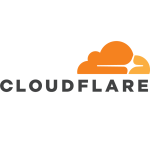For Google Cloud Platform (GCP), we use it as our infrastructure. We host our infrastructures and create our machines, services and automation pipelines. For Google Cloud Identity, we use it as an identity portal for all of our applications. In addition, the internal application for the tools is used for monitoring the product.
The Cloud Identity in GCP is very good and reliable. It can be published fast. Also, Google Cloud Identity allows you to create groups and give access by group instead of by user. It allows you to create different access policies for every component of new infrastructure, and from a security perspective, this is good.
The Google Cloud UI has a lot of bugs, and they are working on enhancing it. There are a lot of things that need to be enhanced. For example, sometimes, the snapshot portal makes you have a schedule to create multiple snapshots when you have a huge infrastructure hosted on Google Cloud. Sometimes the browser or the UI hangs when looking for a specific snapshot. Also, Google Cloud support responds very quickly, but the UI still needs to have more enhancements related to the performance.
The integration of the solution for patching, updating, and installing the updates could be better. For example, they have a solution called "always patching," which needs to be enhanced. It is not purely a SaaS solution. It should be mostly platform as a solution, not software.
We have been using this solution for more than two years.
It is a stable solution. However, it would be more stable if Google cared more about the UI.
It is a scalable solution. Most of the teams in our company use this solution. The number of people needed for deployment and maintenance depends on whether it is a small or medium company solution. Only one person is needed for a small environment, while two or three are required for a medium environment. The team that supports the solution comprises network and security people. We plan to increase our usage of the solution as our customer base increases.
The technical support is good, and they are very responsive. I rate the technical support an eight out of ten.
I personally have used Azure and AWS in the past.
The initial setup was easy, and it was just plug-and-play. If you have a good understanding of infrastructure, this solution is perfect. It allows us to build an entire infrastructure for a startup or medium company in one hour. To do this, we need to try the script with the machines we need. Next, we need to define the CPU, memory and application we want to install on the machine. Then we can click and run the playbook or the tier forms script and go back after hours. By then, everything has been created, and we'll have an infrastructure that can handle a small startup.
The deployment depends on the complexity. If it is a small deployment, it might take less time, but a larger deployment will take more. For example, if we want to use a machine on GCP, it might take about two to three minutes, but if we have a huge deployment for multiple machines with multiple loop balances, records, and firewall rules, it might take 40 minutes to one hour. We completed the deployment in-house.
I rate this solution an eight out of ten. Regarding advice, I would recommend planning for everything and keeping it simple. It is also important to monitor consumption on the Google Cloud to ensure you are not paying for something you are not using.
Most cloud providers have the same features, but the main difference between them is the solution's availability and cost. Most of the features are only utilized at 30% or 50%.









